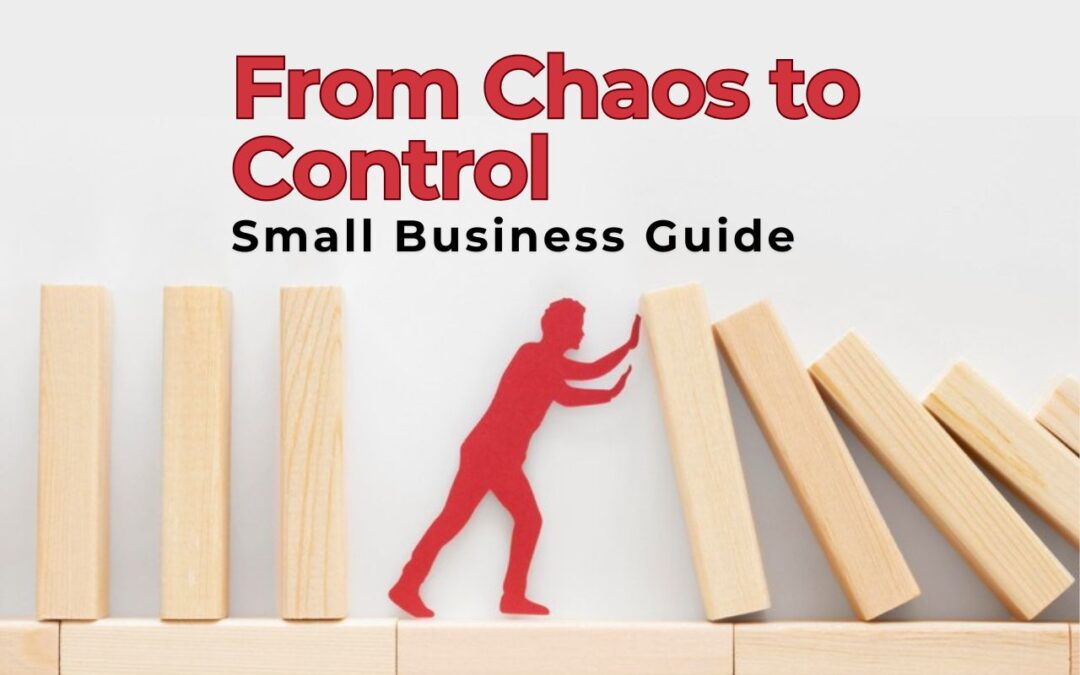Running a small business often feels like a whirlwind of responsibilities. From managing employees and handling customer complaints to juggling finances and ensuring the timely delivery of services or products, it can become chaotic very quickly. However, with a clear focus on operational efficiency, small business owners can transition from chaos to control.
Operational efficiency isn’t just a corporate buzzword; it’s a practical framework that helps streamline business activities, cut waste, improve productivity, and create an environment where growth and sustainability become natural outcomes. This guide takes a comprehensive look at how small business owners can from chaos to control embrace operational efficiency and bring order to their daily operations.
Understanding Operational Efficiency in a Small Business Context
Operational efficiency is the ability of a business to deliver high-quality products or services in the most cost-effective manner. It revolves around maximizing output while minimizing input – effort, time, money, and resources. The idea is to ensure that every action taken within a business contributes directly or indirectly to its core objectives.
When operational efficiency becomes a part of a company’s culture, it leads to:
- Enhanced customer satisfaction
- Reduced operational costs
- Faster decision-making
- Increased profitability
- Better scalability
For small businesses, where resources are limited and the margin for error is thin, achieving operational efficiency can be the difference between growth and stagnation.
The Common Causes of Chaos in Small Businesses
Before diving into solutions, it’s important to identify what typically causes chaos in small businesses:
- Lack of Standardized Processes: When every employee completes a task differently, it results in inconsistent quality and inefficiency.
- Overdependence on the Business Owner: Many small business owners handle everything themselves, which not only overwhelms them but also slows down the business.
- Poor Time Management: Without a structured schedule, tasks pile up, and deadlines get missed.
- Manual Workflows: Paper-based systems or unstructured digital processes increase the risk of errors.
- Lack of Training: Employees who are not properly trained take longer to complete tasks and often make costly mistakes.
- No Clear Goals: Without a strategic direction, it’s difficult to prioritize work and measure success.
The Foundation of Operational Efficiency: A Step-by-Step Approach
Transitioning from chaos to control requires a systematic approach. Here are the foundational steps every small business should consider:
1. Document Existing Workflows
Start by mapping out every process in your business. Whether it’s taking customer orders, handling inquiries, fulfilling deliveries, or managing inventory, break it down step by step. Documenting processes helps identify:
- Redundancies
- Unnecessary steps
- Potential areas for automation or improvement
This clarity is essential for further optimization.
2. Establish Standard Operating Procedures (SOPs)
Once processes are mapped out, create SOPs for every recurring task. SOPs are written instructions that ensure tasks are carried out uniformly, regardless of who is performing them. Benefits include:
- Consistency in output
- Easier training of new employees
- Streamlined communication
- Reduced dependence on specific individuals
3. Implement Time Management Techniques
Time is one of the most valuable resources for small businesses. Efficient time management can greatly improve output without extra costs. Introduce practices such as:
- Time-blocking work schedules
- Daily prioritization of tasks
- Setting weekly goals
- Eliminating distractions during critical work hours
Efficient time use can significantly reduce stress and increase productivity.
4. Train and Empower Employees
Efficiency begins with people. Your team must be trained not just in their job duties but in understanding the larger business goals. Provide training programs that:
- Foster skill development
- Improve team collaboration
- Encourage ownership of tasks
- Promote problem-solving
Empowered employees work proactively and take initiatives that contribute to smoother operations.
5. Eliminate Unnecessary Tasks
Once workflows are documented and SOPs are in place, assess every task. Ask:
- Does this task add value?
- Can this task be simplified?
- Is this task still relevant?
Trimming the fat from your operations ensures that resources are being used efficiently.
6. Improve Communication Channels
A lot of time is wasted due to unclear communication. Ensure that your team understands their responsibilities and knows how to share information quickly and effectively. This can be done by:
- Defining roles clearly
- Holding structured meetings
- Creating a centralized system for task updates and follow-ups
Clear communication helps avoid duplication, confusion, and missed deadlines.
7. Measure Key Performance Indicators (KPIs)
To track operational efficiency, identify and measure KPIs that matter. These can include:
- Task completion rates
- Customer satisfaction scores
- Average handling time
- Inventory turnover
- Lead conversion rates
Measuring KPIs helps monitor progress, set realistic targets, and refine strategies based on performance.
8. Build a Culture of Continuous Improvement
Operational efficiency is not a one-time fix. It must become a mindset. Encourage feedback, innovation, and regular reviews. This means:
- Holding quarterly strategy sessions
- Allowing employees to suggest process improvements
- Keeping up with industry trends
By nurturing a culture of continuous improvement, you ensure that your business remains agile and adaptable.
Optimizing Different Areas of Your Business
Efficiency must be applied across all functions of your small business. Here’s how to bring efficiency to major operational areas:
1. Customer Service
A responsive and proactive customer service system reduces complaints and builds loyalty. Strategies include:
- Using templates for frequent inquiries
- Training staff on soft skills
- Setting response time targets
2. Inventory Management
Whether you sell products online or offline, efficient inventory management is crucial. Aim to:
- Avoid overstocking or understocking
- Perform regular inventory audits
- Organize inventory for faster access
3. Finance and Budgeting
Keep a close eye on your finances to identify cost-cutting opportunities and maximize profitability. Efficient finance practices include:
- Monthly expense reviews
- Cash flow forecasting
- Setting clear budget limits for departments
4. Sales and Marketing
Streamline how you reach potential customers and close sales. Efficient practices include:
- Focusing on high-ROI marketing channels
- Creating structured sales funnels
- Setting monthly marketing goals and analyzing results
5. Human Resources
Even a small team needs a structured approach to HR. Improve HR efficiency by:
- Creating clear job descriptions
- Establishing a hiring checklist
- Holding regular performance reviews
Avoiding Common Efficiency Pitfalls
While striving for efficiency, small businesses should be cautious about these pitfalls:
- Over-automating: Not every task should be automated. Human judgment is still critical in many areas.
- Micromanaging: Efficiency thrives in environments where employees are trusted and empowered.
- Skipping Training: Tools and processes are only effective when people know how to use them.
- Ignoring Feedback: Employees on the ground often have valuable insights into inefficiencies.
- Focusing only on speed: Efficiency is not about working faster but working smarter and more effectively.
Building Resilience Through Efficiency
One of the biggest advantages of operational efficiency is the ability to weather tough times. Businesses that run efficiently can:
- Respond quicker to market changes
- Adapt to customer demands
- Operate with lower costs during lean periods
- Scale up operations without overextending resources
Efficiency creates resilience, which is crucial for long-term sustainability.
Real-Life Scenario: A Small Business Transformation
Imagine a small printing business where the owner handled client meetings, design approvals, printing supervision, and delivery coordination. Orders got delayed, staff were underutilized, and clients became frustrated.
By applying operational efficiency strategies, the business:
- Documented and delegated each process step
- Created clear roles for staff
- Scheduled daily production runs
- Measured order fulfillment times
Within three months, order delivery improved by 50%, client satisfaction increased, and the owner finally had time to plan for expansion.
Conclusion: Embrace the Shift from Chaos to Control
Operational efficiency isn’t just about saving money or completing tasks faster. It’s about building a business that works for you, not against you. As a small business owner, you don’t need massive budgets or large teams to gain control of your operations.
You need clarity, consistency, and a commitment to continuous improvement. Start small: map your processes, eliminate waste, empower your team, and measure what matters. Over time, these incremental changes will lead to a business that runs smoothly, satisfies customers, and supports your long-term goals.
From chaos to control – the path is not only possible but also powerful. The sooner you begin, the sooner you can lead your business with intention and efficiency.












